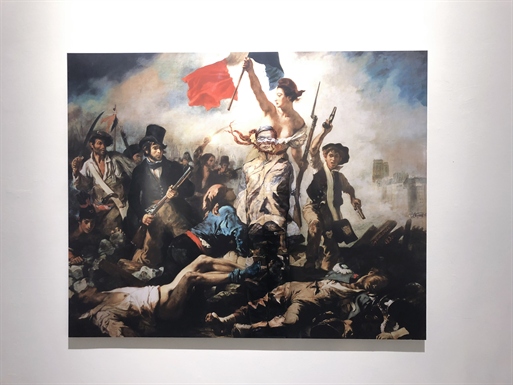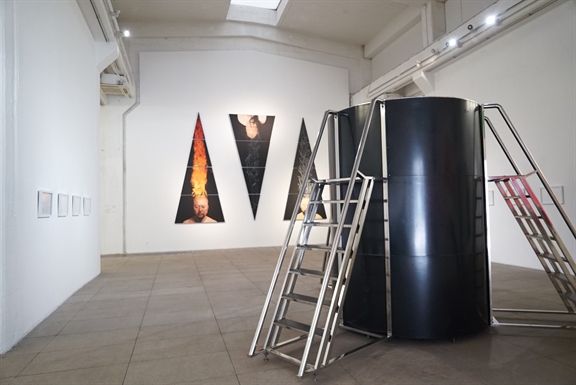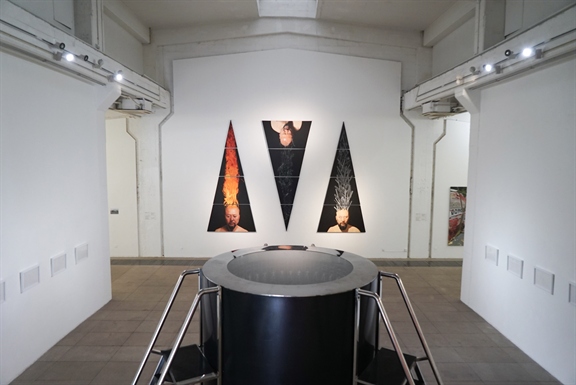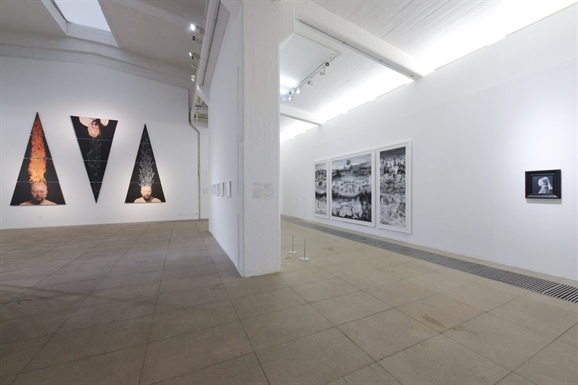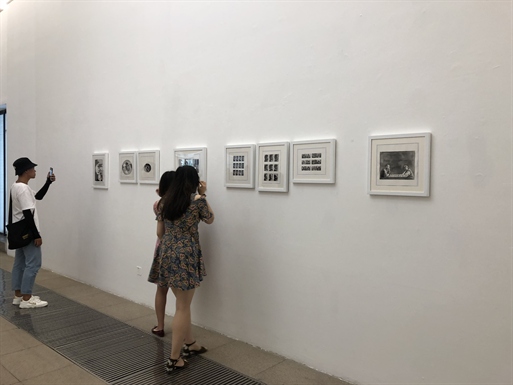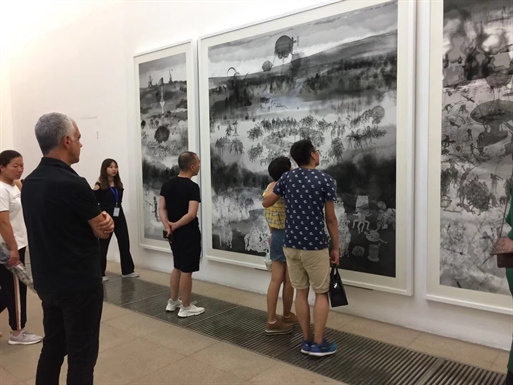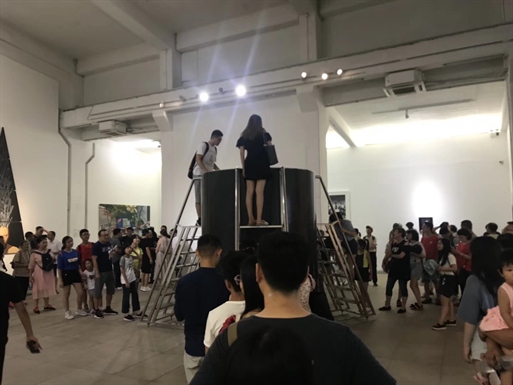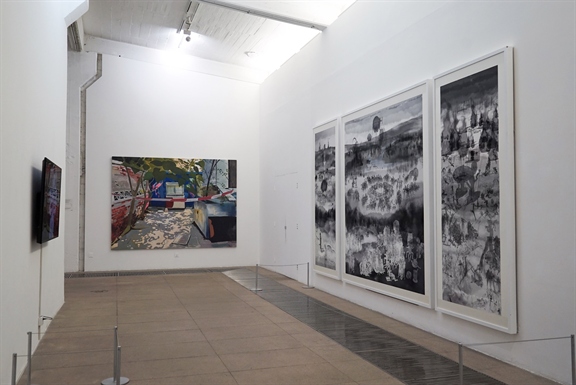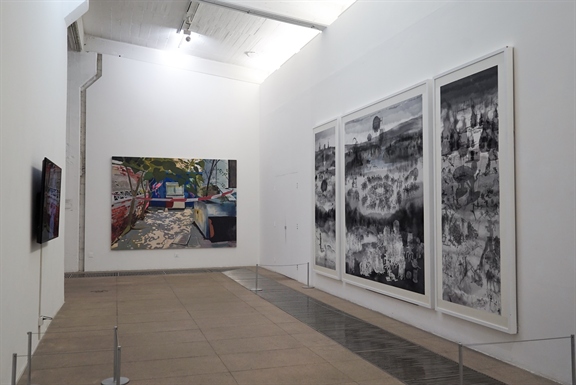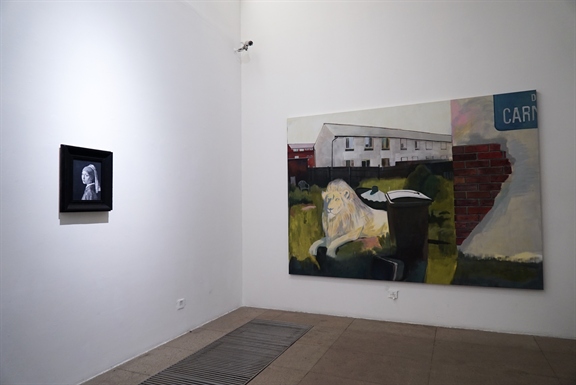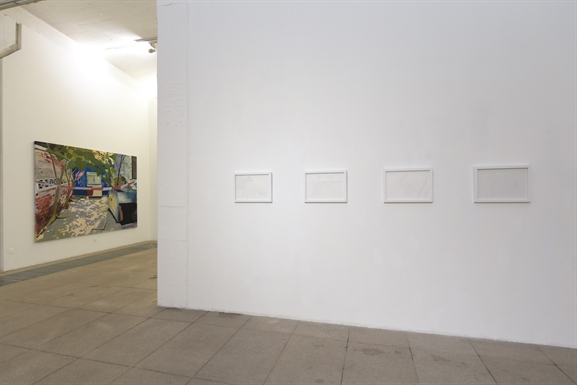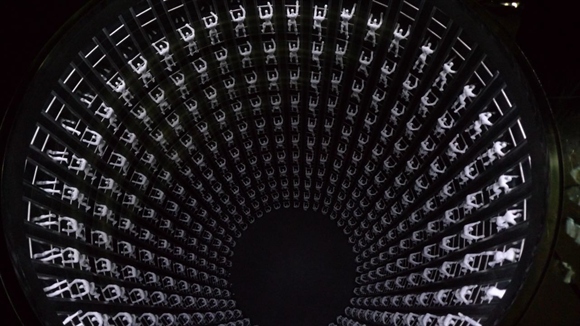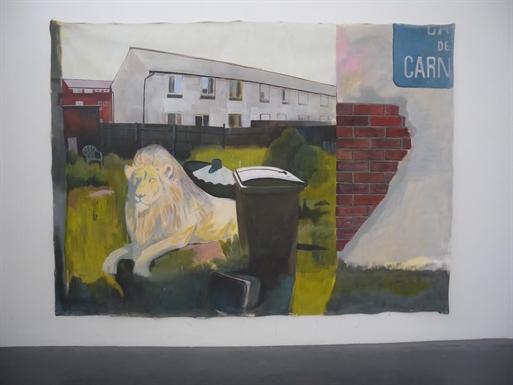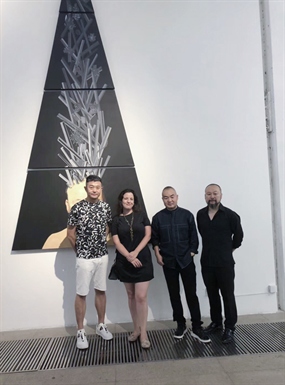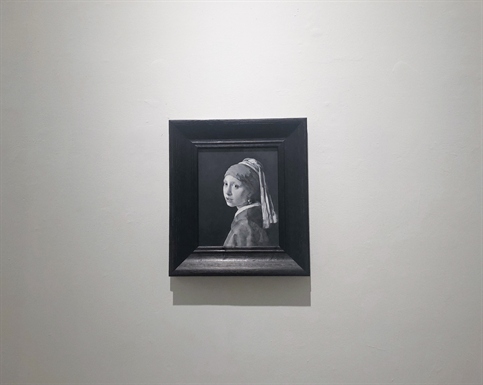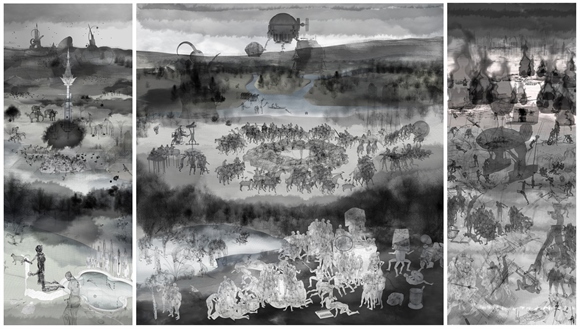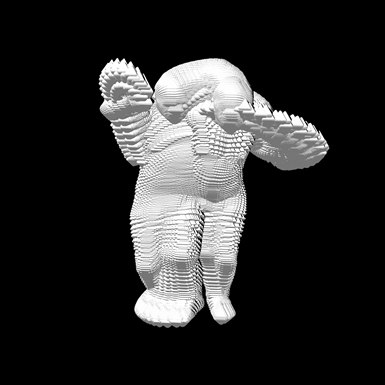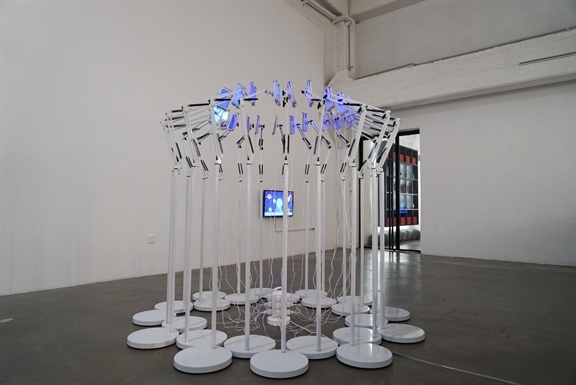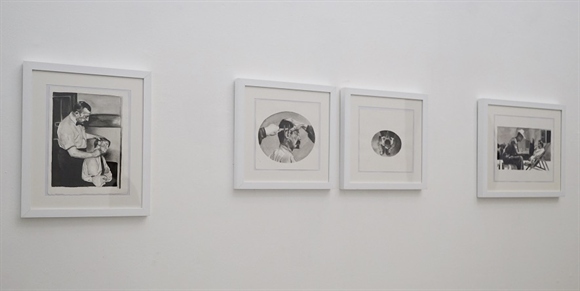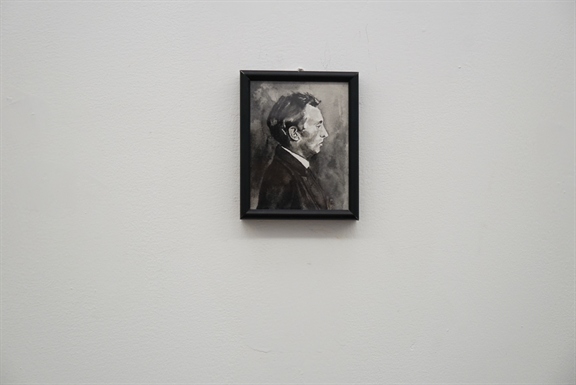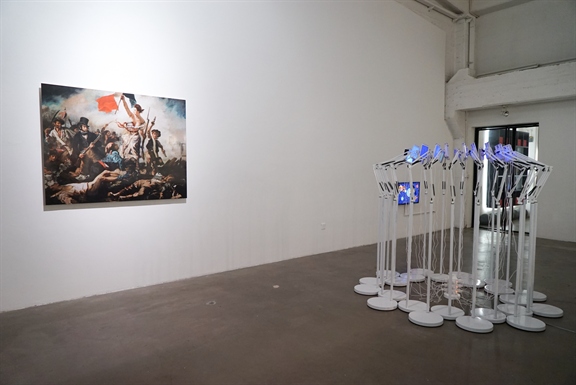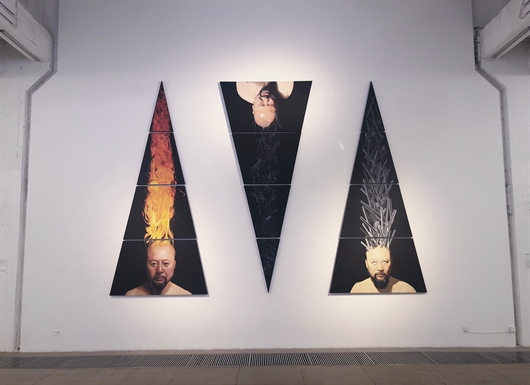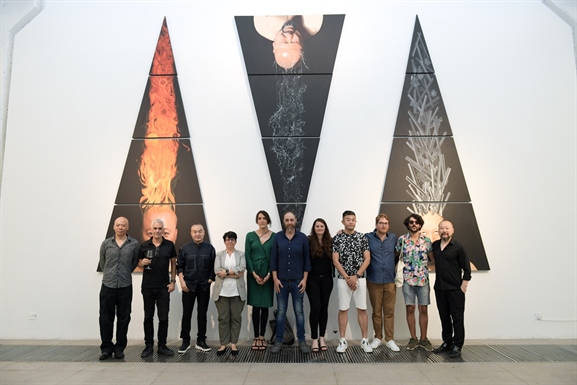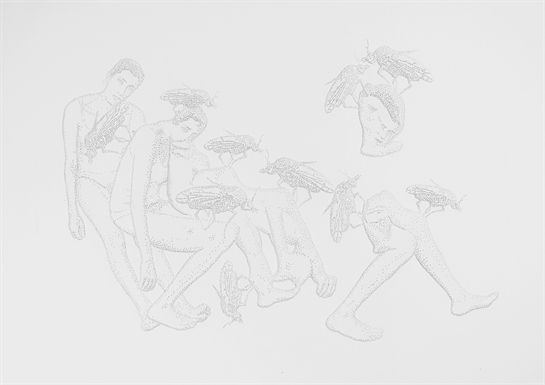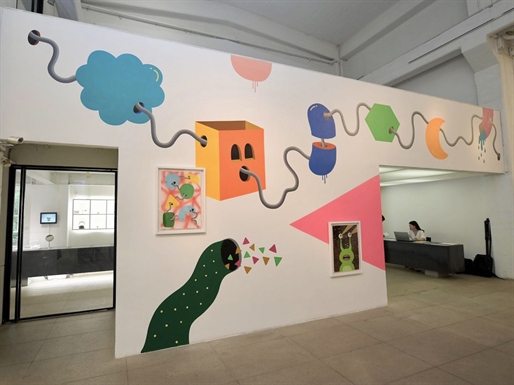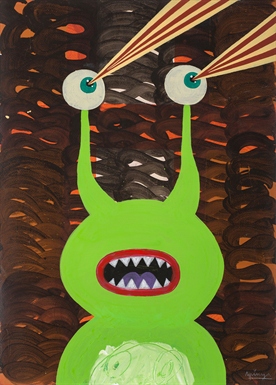This group
exhibition of five contemporary Spanish artists and four Chinese artists of
internationally renowned will present their latest work in this exhibition at
Whitebox Art Center Beijing from July 28 to August 15, 2018. The Spanish
painters will make a residence program in Beijing and they will visit the
studio of Chinese artists during the month of July, creating a new piece
resulting from the dialogue with the artwork of contemporary Chinese art.
Hybridizations:
the ghost of the painting reflects on the recurrent announcement of the death
of painting throughout the 20th century. While painting and its principles have
always been present as "a spectrum" that survives in other
contemporary art formats. Therefore, this exhibition contains works from other
artistic disciplines such as video art, performance or installation that
reflect on painting, its expansion to infinity and its rich versatility in the
contemporary art.
This project
is a co-production between ILLENC, the Ministry of Culture of Spain, and
Whitebox Art Center, in order to improve the knowledge of contemporary Spanish
culture in China and vice versa.
Hybridizations: the ghost of painting
Recently I made an unexpected visit to the Prado Museum in Madrid. Thai filmmaker Apichatpong Weerasethakul , twice winner of the Golden Palm at the Cannes Film Festival in France, asked me to show him The Story of Nastagio degli Onesti (1483). This work of the Italian painter Sandro Botticelli belongs to a set of four tables, three of which are preserved in the collection of the Spanish museum. It represents one of the stories told in the novels of the Decameron (1348-1353) by Giovanni Boccaccio , The story of Nastagio degli Onesti. Nastagio is a young and wealthy nobleman from Ravenna, in love with a lady who does not belong to him. As he walks melancholy through the forest, a ghostly scene takes place before his eyes. A naked woman is pursued by two dogs and a gentleman who ends up hunting and tearing her out and throwing her heart to the dogs that devour it in the foreground. Before the astonished glance of Nastagio, the ghost of the gentleman explains the woman had despised his love and this had taken to him to commit suicide with his own sword. She died shortly after and once in hell, both suffered an eternal punishment: perpetually reliving the scene that Nastagio had witnessed in the forests of Ravenna. Nastagio, very astute, will take advantage of this strange appearance to warn his beloved of the similar fate that could run if she did not agree to marry him. The last painting, in a private collection, shows the nuptial banquet that puts an end to this story that would have a moralizing function for the women of high society from the Italian Renaissance .
While observing the Prado tables, the Thai director was very impressed by the way of visually presenting the story to the viewer, through a cyclic and repetitive narrative. Thus, while the brutal scene of the murder of the woman happens in the foreground, we observe the persecution starts again in the background. That is to say, in the same pictorial space different narrative times are being repeated. The past and the present converge in the same place. Botticelli has had the skill of painting the character of Nastagio on three occasions in the same pictorial space, but at different moments of the story. In the background, we observe him explaining what happened in the forest, while that memory takes shape in the foreground of the table, dividing the scenes through the trees of the forest. The image of Nastagio is multiplied before the atonic gaze of the spectator, as if he were a ghost . Suddenly, I remembered some of Apichatpong's films, in which ghosts appear in everyday life and his film characters unfold in the same frame . The film critic has always considered his cinema as “contemporary” because of its rare narrative where the classical cinema basis of space and time are altered.
The history of ideal and rational art has been questioned throughout the 20th century. Aby Warburg (1866-1929) not only gave him one of the first fatal blows, but proposed another model of the history of the images in which these are expressed by survival and reminiscence, with unexpected and obsessive reappearances such as a ghost would act. Through his project of Atlas Mnemosine, Warburg raises a history of images that is "ghostly", in short a new look at the images, free of the logic imposed by the rationalism of the Enlightenment. In this sense, the cinema or "moving images " of Apichatpong would have a closer connection with the "primitive" narrative tradition of Botticelli's painting. And here, the concepts as primitive or contemporary that the history of European rationalist art has coined are completely distorted, meaningless. Wargburg's reading of images as ghosts that appear again and again in different spaces and times, regardless of the technical medium or the artistic style we speak of, serves as a starting hypothesis to launch a question to the viewer. How to interpret the so repeated "death of the painting" within this "ghostly" reading of the history of the images that Warburg does?
Hybridizations: the ghost of the painting reflects on the announced death of painting throughout the 20th century. Painting and its principles have always been present as "a spectrum" that underlies other manifestations of contemporary art. This group exhibition contains works of art video, photography or installation that evoke painting, its expansion to infinity and its rich versatility in contemporary art. For this, the exhibition introduces together for the first time the recent work of five contemporary Spanish artists and four Chinese artists of international renown. In the exhibition we will see how Girbent and Miao Xiaochun play with the idea of the ghost of the painting as if it were a "double" or a copy, questioning the concept of originality that has so obsessed history of Western art. Amparo Sard and Xu Zhongmin develop the concept of the obsessive repetition of form as the creative motor of the history of painting. As in the case of Cang Xin, it is the artist's own body that serves as an expressive medium of his work, going through his first performance to the hyperrealist painting in his recent work. José Fiol and Tomás Pizá will dialogue with the performative work developed by Cang Xin since the 90s in the Beijing artists villages such as the famous dongcun. Reflecting on the "layers" of interpretation that art criticism creates in the work of an artist. In Liu Bolin‘s and Albert Pinya‘s works, the body becomes painting itself and goes beyond the physical limits of the canvas, transforming the painting into photography, art video or performance . The term hybridization as a metaphor for the mixture is the idea on which this intercultural dialogue is based, which defines the situation of metamorphosis that contemporary painting faces in order to survive in our days.
Text by Susana Sanz

